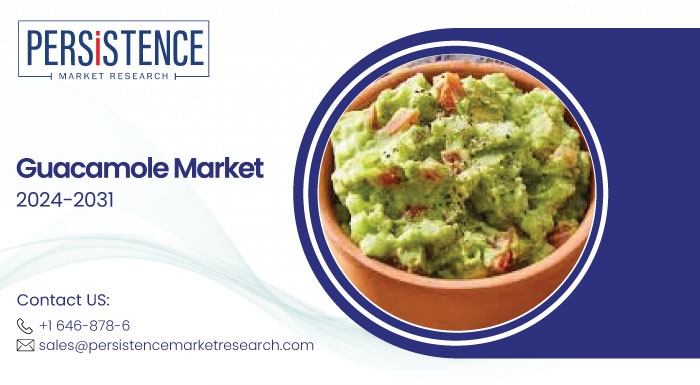 Social Media Content Packs – Stay Active Without Lifting a Finger!
Social Media Content Packs – Stay Active Without Lifting a Finger!
North America Plant Based Milk Market: Challenges and Growth Factors
Written by Shweta Dixit » Updated on: October 18th, 2024

The plant-based milk market in North America has witnessed a significant surge in recent years, driven by changing consumer preferences, increased health consciousness, and a growing awareness of environmental issues. As traditional dairy consumption declines, plant-based alternatives have emerged as a popular choice for many consumers, leading to substantial growth in this sector. However, this growth is accompanied by a set of challenges that manufacturers must navigate to maintain momentum and capitalize on market opportunities.
Read More: https://www.persistencemarketresearch.com/market-research/north-america-plant-based-milk-market.asp
Current Market Landscape
The North American plant-based milk market has experienced rapid growth, with sales reaching approximately $3 billion in 2023 and projected to continue increasing at a compound annual growth rate (CAGR) of around 11% through 2030. Almond milk, soy milk, oat milk, coconut milk, and cashew milk are among the most popular options, each catering to varying consumer tastes and dietary needs.
The increasing prevalence of lactose intolerance and milk allergies has also contributed to the rise of plant-based milk consumption. Consumers are increasingly opting for alternatives that align with their dietary restrictions while providing essential nutrients.
Key Growth Factors
Health Consciousness: A shift towards healthier lifestyles has spurred interest in plant-based products. Consumers are seeking options low in calories and saturated fats and high in vitamins, minerals, and antioxidants. Many plant-based milks are fortified with nutrients such as calcium, vitamin D, and vitamin B12, making them appealing to health-conscious individuals.
Environmental Sustainability: Growing concerns about climate change and animal welfare have driven consumers to seek environmentally friendly alternatives. Plant-based milk generally requires fewer natural resources and produces lower greenhouse gas emissions compared to traditional dairy farming. This sustainability factor resonates particularly with younger consumers who prioritize ethical consumption.
Diverse Flavor Options: The variety of flavors and formulations available in the plant-based milk market caters to diverse consumer preferences. Brands are experimenting with flavors such as vanilla, chocolate, and hazelnut, expanding their product lines to attract a broader audience. This variety not only appeals to different taste preferences but also encourages consumers to integrate plant-based milk into their daily routines.
Innovative Marketing Strategies: The rise of social media and influencer marketing has significantly impacted the promotion of plant-based products. Brands are leveraging these platforms to reach potential consumers, showcase their products, and educate the public about the benefits of plant-based diets. Engaging content and influencer endorsements help demystify plant-based options, making them more accessible and appealing to a wider audience.
Increased Availability: Retailers are responding to the growing demand for plant-based milk by expanding their product offerings. Grocery stores, cafes, and restaurants are increasingly stocking a wide range of plant-based milk options, making it easier for consumers to find and purchase their preferred alternatives. E-commerce platforms are also facilitating access, allowing consumers to conveniently shop for their favorite plant-based products from the comfort of their homes.
Challenges Facing the Market
Despite the robust growth and favorable market conditions, the plant-based milk sector faces several challenges:
Competition with Dairy Milk: Traditional dairy milk remains a dominant player in the beverage market, and its longstanding presence poses a challenge for plant-based alternatives. Price competitiveness and consumer loyalty to dairy products can hinder the adoption of plant-based options, particularly in regions with strong dairy traditions.
Nutritional Perceptions: Some consumers still perceive plant-based milk as nutritionally inferior to dairy milk. Addressing this perception through education and transparency about nutritional benefits is essential for overcoming consumer skepticism. Brands must clearly communicate the advantages of plant-based milk, including its fortification with essential nutrients.
Supply Chain and Sourcing Issues: Fluctuations in the supply chain, particularly concerning raw materials such as nuts, grains, and legumes, can affect the production of plant-based milk. Climate change impacts agricultural yields, leading to potential shortages and increased prices. Brands must develop sustainable sourcing practices to mitigate these risks.
Regulatory Challenges: As the plant-based milk market expands, regulatory scrutiny may increase. Issues surrounding labeling, marketing claims, and health benefits could lead to stricter regulations that manufacturers must navigate. Staying informed and compliant with evolving regulations is crucial for sustaining growth in this sector.
Consumer Education: Educating consumers about the benefits of plant-based milk is essential for continued growth. Many individuals may be unaware of the variety of plant-based options available or their nutritional advantages. Brands must invest in educational initiatives to foster awareness and encourage trial among potential consumers.
Conclusion
The North American plant-based milk market presents a landscape rich with opportunities and challenges. Factors such as health consciousness, environmental sustainability, and diverse flavor options are driving consumer demand, while innovative marketing strategies and increased availability further bolster growth. However, the market must contend with competition from traditional dairy products, nutritional perceptions, supply chain issues, regulatory challenges, and the need for consumer education.
As the market evolves, companies that adapt to changing consumer preferences, address challenges effectively, and prioritize sustainability will be well-positioned to thrive in this dynamic and rapidly growing industry. The future of plant-based milk in North America looks promising, with continued innovation and a commitment to meeting consumer needs at the forefront of success.
Note: IndiBlogHub features both user-submitted and editorial content. We do not verify third-party contributions. Read our Disclaimer and Privacy Policyfor details.
Copyright © 2019-2025 IndiBlogHub.com. All rights reserved. Hosted on DigitalOcean for fast, reliable performance.














